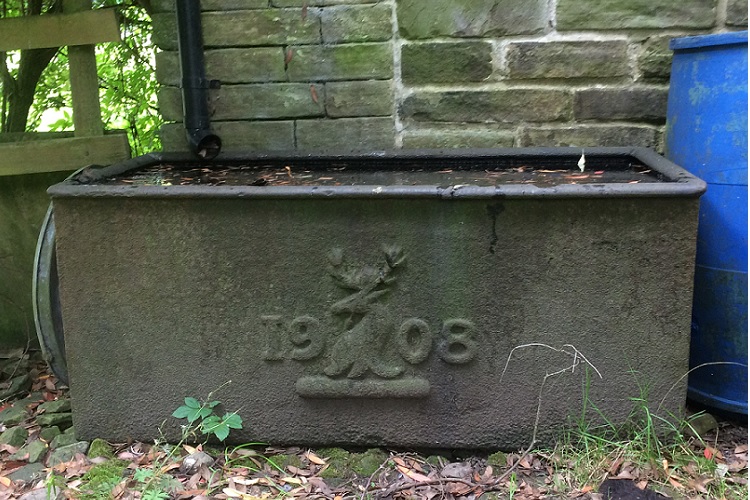
The horse trough was in a sorry state and full of goldfish...
Amid the many stories and memories that will surely be recalled over the coming months about the legendary cornet player James Shepherd, who recently passed away aged 86, is a slightly different one from his great friend Colin Aspinall.
The tuba player was a founder member of Jim’s famous Versatile Brass ensemble. In their retirement the two former Black Dyke Mills Band colleagues also enjoyed a joint keen interest in gardening and walking.
Cast iron troughs
One day when Jim was out walking with his grandson’s dog across a local farm field near to his home in Northowram not far from Queensbury, he came across an outbuilding in a dilapidated state of repair, out of which two downpipes fed water into a pair of old cast iron horse-troughs for the livestock.
Ever inquisitive, Jim was intrigued to find that they each bore a familiar crest – that of the Black Dyke Mills and its famous stag’s head. Although rusty they were still in good condition, surprisingly so given their location and even more so as one was marked 1878 and the other 1908.
Former glories
Ever inquisitive, Jim was intrigued to find that they each bore a familiar crest – that of the Black Dyke Mills and its famous stag’s head. Although rusty they were still in good condition, surprisingly so given their location and even more so as one was marked 1878 and the other 1908.
Jim soon spoke with Colin, and both were determined to find out more and save them from being lost to the ravages of farming time.
“They just intrigued us,” Colin told 4BR. “They were never seen by either of us at Black Dyke Mills even though the famous bandroom was the old mill stables. We were determined though to see if we could return them to their former glory and so set about asking if we could buy them.”
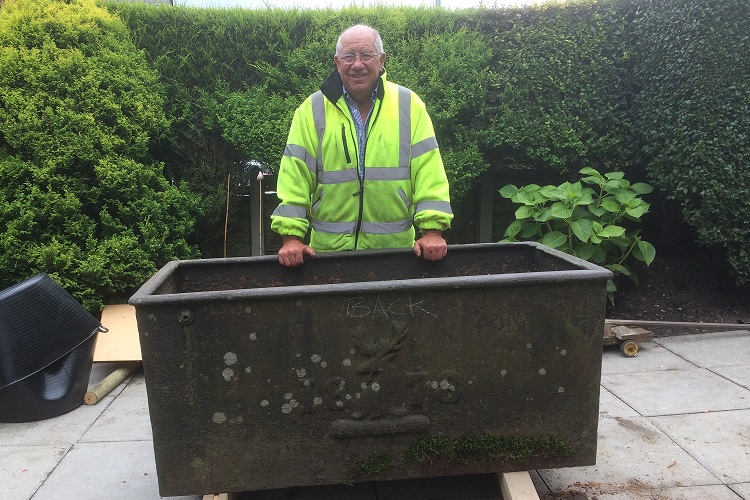
Colin used his engineering knowledge to get the troughs to their new homes
Fortunate change of mind
Unfortunately the initial request was met with firm Yorkshire refusal from the elderly lady farm owner. “When she said, ‘No way’, she meant it,” Colin recalled. “We didn’t argue, although Jim left his contact details just in case she changed her mind.”
Fortunately she did, and a week or so later she telephoned him to apologise, saying that she now knew who he was, and that she had been a fan of his when he played with the band in local concerts.
Fortunately she did, and a week or so later she telephoned him to apologise, saying that she now knew who he was, and that she had been a fan of his when he played with the band in local concerts.
However, she went on to say that he could have them on one proviso: That they provided two old bath tubs to replace them and had to make sure that all the goldfish that were swimming in them were put back safely in their new homes!
Bath tub exchange
Colin added: “Jim being the gentleman that he was, agreed, paid money into a charity that the lady said she supported and we provided the two bathtubs to put in their place. Now all we had to do was get them out and work on them.”
Thankfully Colin’s engineering background made sure that a tractor was used to get his trough (which even when empty weighed just under half a tonne) back to his garden, whilst the farmer transported Jim’s to his house.
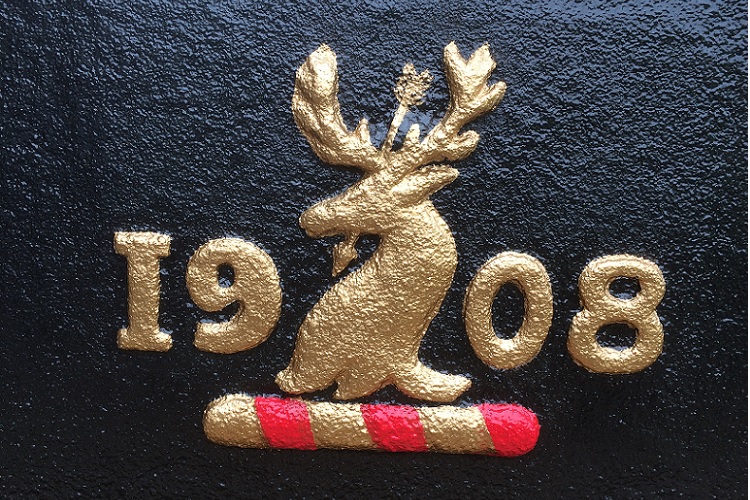
Jim Shepherd's hard work and painting skills brought his trough back to life
Cleaned by hand
Colin recalls, “Jim was delighted and set to work cleaning his by hand with a wire-brush and then painting it up, and I did the same with mine. At the end of plenty of hard work they looked fantastic. Jim was a really good gardener too. I think it told you how much it meant to him that he wanted it to take pride of place in his garden."
Jim was a really good gardener too. I think it told you how much it meant to him that he wanted it to take pride of place in his garden."
Further research on the two horse troughs has unfortunately shed little light on them – even with their embossed dates.
It is thought though that they could have been some of the number that would have been dotted around the old John Foster Black Dyke Mills before lorry transport became the norm after the First World War.
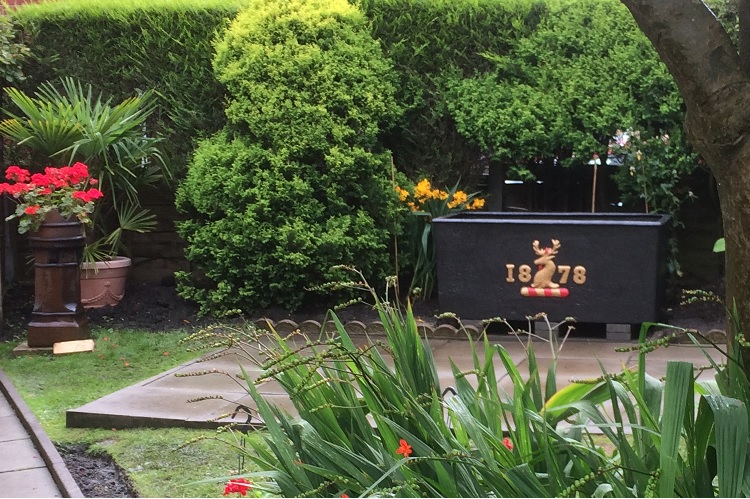
Colin's trough sits proudly in his garden
Provenance
David Hirst, who has undertaken a great deal of research into the Black Dyke Band in his book, ‘The ‘Celebrated' Black Dyke Mills Band – The Victorian Years’ also offered some explanation.
“The famous bandroom was the former stables (and had the original tethering rings on the outside wall for many years), but as the band used it for its purposes from just after it was formed in 1855, and the building itself was somewhat hidden away until much later, when houses around it were knocked down, I don’t think they came from there.”
it is more likely they came from around the town with a casting date on them.
Casting dates
He added: “They don’t have the John Foster maxim 'Justum perficito nihil timeto’ (Do right and fear nothing) on them either, which was granted in 1856, so it is more likely they came from around the town with a casting date on them. 1878 and 1908 don’t really hold a great significance for the Mill or for the band.”
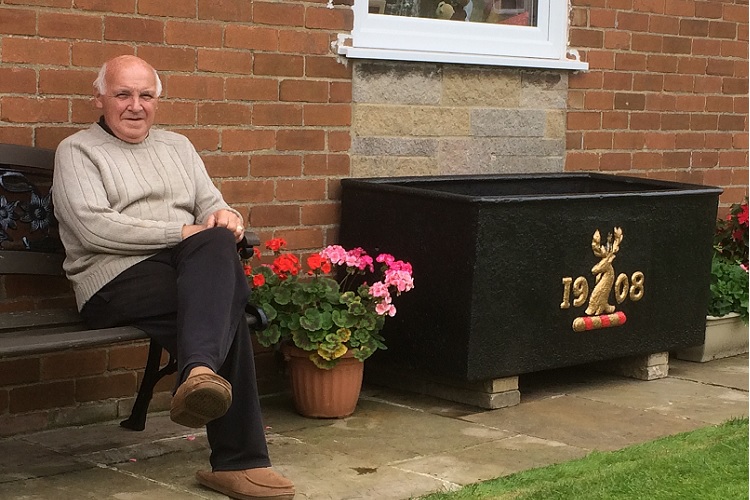
Jim and his trough which was soon to be filled with plenty more of his flowers.
Wonderful reminder
Wherever they came from though, and why they were dated as such we may never know.
However, thanks to a kindly Yorkshire farmer, a super musical friend with an engineering brain, and plenty of hard work, one of the greatest principal cornet players in the history of Black Dyke Mills Band was able to enjoy a daily reminder of his wonderful playing career with the Queensbury ensemble each time he stepped foot in his beloved garden.
Iwan Fox
With thanks to Colin Aspinall













